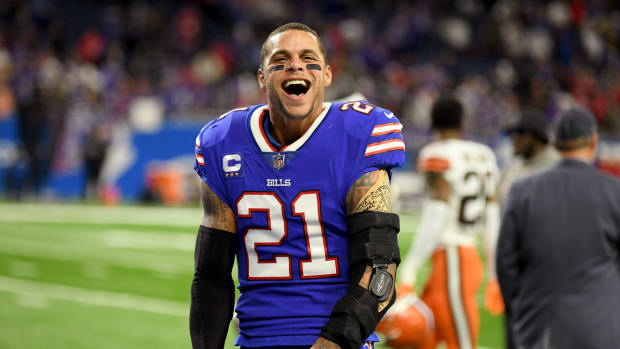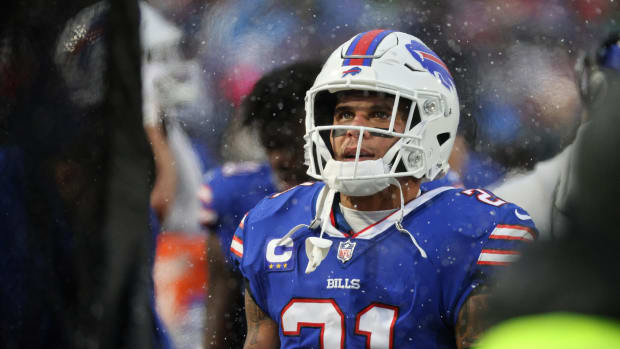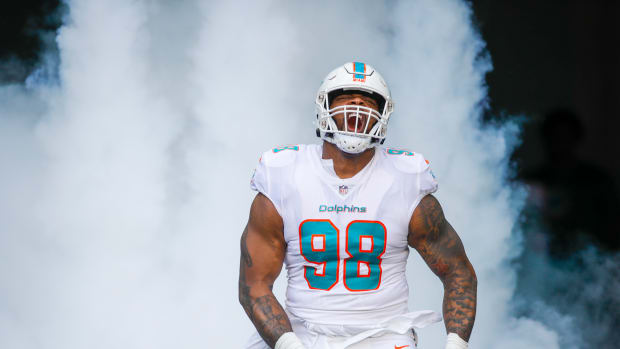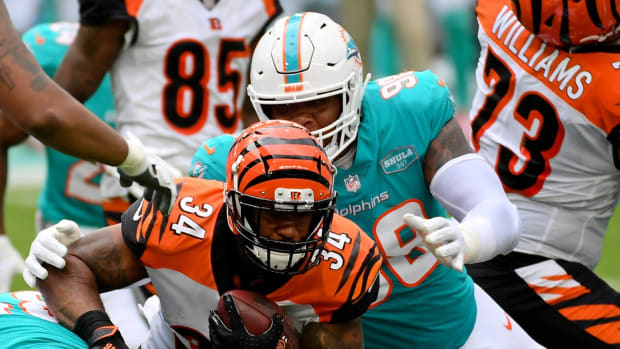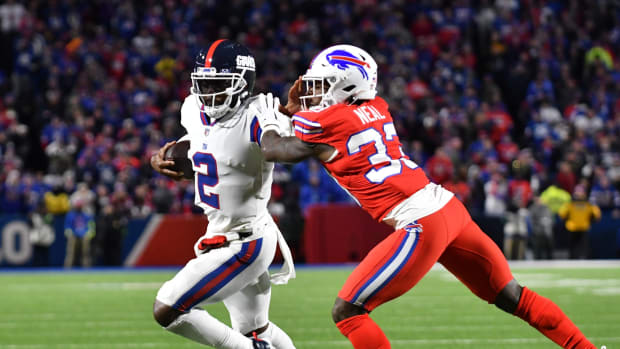Smith and the Weight of History
DeVonta Smith no doubt is a rare talent, as he demonstrated emphatically in 2020 with a performance good enough to earn him the Heisman Trophy, an extraordinary feat for a wide receiver.
But he's also a rare draft prospect, a wide receiver hoping to be a high first-round pick despite less-than-ideal physical dimensions.
We don't know Smith's exact height and weight because he declined to have those measured at the Senior Bowl this week, but it's not a reach to suggest he might not have wanted NFL teams to see just how light he is.
Smith was listed at 6 feet 1, 175 pounds by the University of Alabama, though NFL Draft Bible founder Ric Serritella said in a story on Eagle Maven sources indicated his weight was more like 164.
And, no matter how talented Smith, there just aren't very many wide receivers in the NFL who are that tall and that light at the same time — even assuming Smith ends up at his listed weight when he allows himself to get officially weighed.
Those are facts. And history also suggests that wide receivers who go early in the NFL draft tend to be bigger, much bigger.
Because there seems to be this notion that the Miami Dolphins could look to reunite him with quarterback Tua Tagovailoa, Smith is hoping to become the 10th wide receiver to be selected in the first three picks of the draft. But you'll see no one among the first nine with similar dimensions (based on figures on NFL.com).
• Wes Chandler, 1978, 3rd overall, 6-0, 186
• Lam Jones, 1980, 2nd overall, 5-11, 180
• Irving Fryar, 1984, 1st overall, 6-0, 198
• Keyshawn Johnson, 1996, 1st overall, 6-4, 211
• Charles Rogers, 2003, 2nd overall, 6-3, 220
• Andre Johnson, 2003, 3rd overall, 6-3, 229
• Larry Fitzgerald, 2004, 3rd overall, 6-3, 218
• Braylon Edwards, 2005, 3rd overall, 6-3, 214
• Calvin Johnson, 2007, 2nd overall, 6-5, 237
Maybe the closest in size would be Jones, and he had five forgettable seasons with the New York Jets (138 catches in 61 games).
Then we can look at the 2020 Pro Bowl wide receivers and you can again see the disparity in size between those players and Smith.
• Tyreek Hill, Kansas City, 5-10, 185
• Stefon Diggs, Buffalo, 6-0, 191
• Keenan Allen, L.A. Chargers, 6-2, 211
• A.J. Brown, Tennessee, 6-0, 226
• Davante Adams, Green Bay, 6-1, 215
• DeAndre Hopkins, Arizona, 6-1, 212
• DK Metcalf, Seattle, 6-4, 229
• Justin Jefferson, Minnesota, 6-1, 202
There's not a great comparison in the group because Hill is much stockier (and much faster) and Diggs weighs at least 20 pounds more.
Finally, we can try to find historical comparisons and one that has been made involves Hall of Famer Marvin Harrison. But Harrison's listed dimensions on NFL.com were 6-0, 185 — and even then he was considered an undersized receiver.
The best example, actually, is a name that only historians or older fans might recognize, and that's Snoop Minnis out of Florida State.
Minnis was a consensus All-American in 2000 when he caught 63 passes for 1,340 (21.3 average) and 11 touchdowns while helping FSU reach the BCS title game against Oklahoma, but he ended up being a third-round selection mainly because he stood 6-1, 172 pounds.
Minnis lasted two seasons with the Kansas City Chiefs, catching 34 passes in 15 games. After being released in August 2003, Minnis would never play another regular season game in the NFL. The last team to give him a shot was the Dolphins in 2004.
Other comparisons that have been brought up include Hall of Famer Isaac Bruce, Anthony Carter, Tony Martin and Lamar Thomas, though all of them actually are a bit bigger.
Another interesting player comp is Ted Ginn Jr.. Yep, that Ted Ginn Jr.
Like Smith, he was a dynamic playmaker in college (in his case Ohio State) but lacked ideal size. Ginn measured at the combine 5-11, 178, but the Dolphins ended up taking him ninth overall in the 2007 NFL draft.
While Ginn never made the Pro Bowl and was overdrafted, it should be noted that Ginn still was in the NFL in 2020 playing in his 14th season.
It also needs to be mentioned that Ginn wasn't anywhere near as accomplished as a wide receiver when he got to the NFL as Smith, who has shown the ability to run just about any route — and well. On the flip side, Ginn ran a 4.38 at the 2007 combine, while Smith is closer to a 4.5 guy.
All this data isn't to suggest that Smith won't succeed in the NFL, but history suggests there's validity to questions about his size.
Dolphins head coach Brian Flores dismissed those concerns after the National team practice at the Senior Bowl on Tuesday, though it would be difficult to envision any NFL official publicly dismissing a prospect ahead of the draft.
NFL Network analyst (and former player) Bucky Brooks expressed the legitimate concerns about Smith in a tweet.
Smith's playmaking ability is unquestioned and it's certainly possible he could break the mold, but history is just not on his side.
